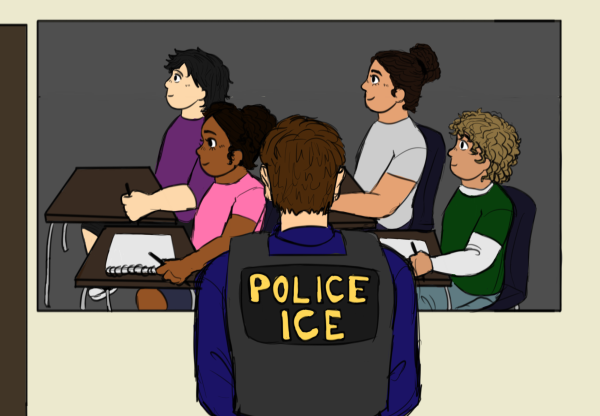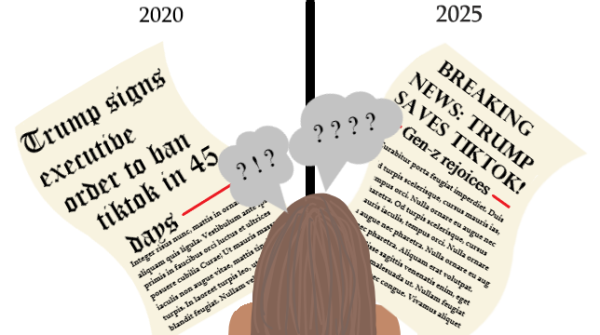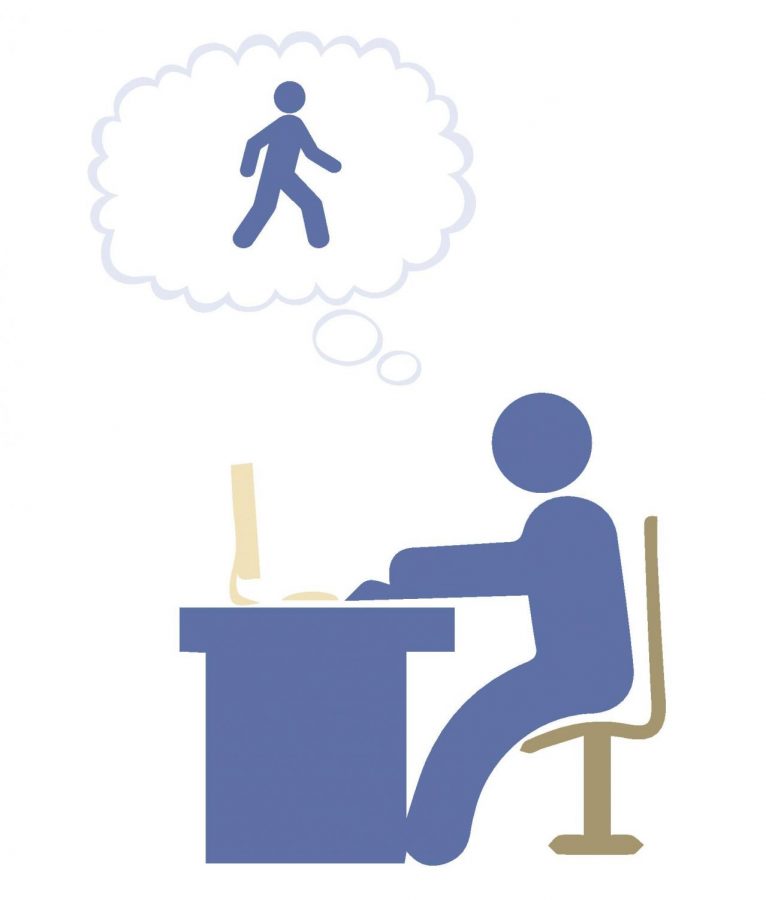Stepping towards a healthier lifestyle
BVH students should spend more time walking
One stride follows the other as a student swiftly walks towards the quad area after being dropped off in the morning. Later in the day, a student wears a grin on their face as they converse with one of their friends between second and third period, deliberately slowing down their walking pace. On the dirt track, a student speed walks with their hands behind their head.
Walking is a day-to-day activity that shaped the lives of Bonita Vista High (BVH) students when they were still on campus. In a time where many students have unfortunately been forced into a sedentary lifestyle, this everyday exercise has been replaced by being confined to deskwork in one’s house. Nevertheless, this doesn’t mean walking should be abandoned; it actually has several benefits.
As a moderate form of exercise, walking naturally lends itself towards improved physical health. Because it is considered an aerobic activity, this exercise is integral to a healthy heart. In fact, Harvard Health’s website explains how “walking improves cardiac risk factors such as cholesterol, blood pressure, diabetes, obesity, vascular stiffness and inflammation.” While not very physically demanding, the ability for walking to increase one’s heart rate is sufficient to yield lifelong benefits.
In the long-term, these improvements in cardiac health magnify; Harvard Health goes on to cite several studies, which prove that walking lowers the probability of cardiovascular events by 31% and decreases the chances of dying by 32%. Regardless of a person’s physical health, almost anybody with functional legs is able to walk, so these beneficial health outcomes can be achieved by most individuals.
Perhaps a less obvious benefit is walking’s correlation with a healthier mental state. In terms of casual walking, a Stanford University study found that it increases humans’ creative output by about 60%. This is because the exercise enables the mind to wander and “open up the free flow of ideas”– in turn, promoting innovation. While walking, people are given time to reflect on their lives and mentally problem solve.
Beyond creativity, walking improves one’s mental health by enabling people to simply feel more at ease. According to NBC News contributor Brianna Steinhilber, “a 10-minute walk may be just as good as a 45-minute workout when it comes to relieving the symptoms of anxiety and boosting [one’s] mood.” In other words, walking offers a sense of comfort amidst internal and external challenges.
Having been in quarantine for seven months, walking is crucial for students now more than ever. Across the nation, people are currently less likely to have their mental and physical needs met, and walking offers a stepping stone to reverse this trend. In a study by Evidation Health, data from thousands of fitness trackers concluded that activity levels decreased by 39% after the announcement of the nationwide shutdown. In short, people started to move less. Furthermore, about half of participants in the same study reported that the shutdown has increased their anxiety.
Walking is a unique form of self-care that can lead BVH students away from declining physical and mental health. Yes, it’s important to focus on schoolwork and the nation’s recent developments, yet it’s equally important to take time off for an activity as beneficial and simple as walking.
One of the optimal ways BVH students can increase the amount of time they spend walking is to develop the habit of daily walks. Steinhilber later states in her NBC News article that a single walk a day is enough to heavily reduce the amount of days spent in a hospital each year. Students can go on these walks before or after school, offering a much-needed break from hours of sitting down and dealing with excessive screen time.
If students are busy, they don’t have to go outside of their homes either. The World Health Organization suggests, “Even in small spaces, walking around or walking on the spot, can help you remain active. If you have a call, stand or walk around your home while you speak, instead of sitting down.” Walking doesn’t have to be an extensive or time-consuming task in order for it to be integrated into one’s daily life.
At face value, one may dismiss walking as insignificant compared to more vigorous exercises such as running. However, it’s indisputable that taking even a few more steps each day is a simple, effective way to cultivate a healthier lifestyle. Amidst a nationwide obesity and mental health crisis, it’s crucial for BVH students to not dismiss walking as obsolete. After all, a walk a day does keep the doctor away.

As a senior attending Bonita Vista High, this is my second year on staff. Personally, I find Newspaper compelling not solely due to its devotion towards...

I am a senior at Bonita Vista High School and this is my second year on staff. I joined newspaper in order to achieve my full potential with my writing...






Eric Helle • Nov 24, 2020 at 1:41 pm
Mr. Abutin,
Thank you for bringing attention to the benefits of walking. Since we moved to distance learning in March, I made an effort to walk around my neighborhood. It seemed like a great way to chase the Covid-19 blues away and, in addition to the consistent exercise, it also lead me to observing the small changes in my surrounding suburban landscape, especially the colors and shapes of blooming flowers. Walking became a mood enhancing activity, meditative and reenergizing.
As I read your piece, I wondered if you or your staff polled your students on exercising during the pandemic. I hear your voice and the voice of the experts your cite, but I don’t hear the voices of any students or even your school’s physical education teachers. I am really curious as to how physical education teachers are working with students during this prolonged school closing and what students think about the program being offered.